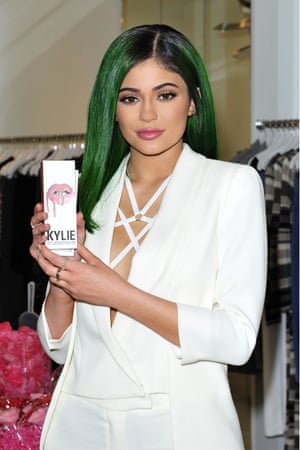Shopify – the good shop to Amazon’s bad shop
You probably will not have heard of Shopify, or be able to say what the company does, but you will almost certainly have used it. The joggers you found on Instagram at the beginning of lockdown and have worn continually since? Those Gymshark shorts you haven’t used for months, now the gyms are closed? The coffee beans you bought online and ground at home, while you waited for the cafes to reopen?
Shopify provides the technology for anyone to set up a store and sell their products online, from the visible end of the website to the processing capabilities necessary to add stock, track inventory and complete sales. Because it is affordable, Shopify is favoured by small- to medium-size brands that can’t afford to pay for costly, custom website builds. Basic packages start at £29 per month. About 1m brands use its services, including major names such as Pepsi and Fashion Nova, and 80,000 of those merchants are based in the UK.
As the high street has struggled, and platforms such as Instagram become unlikely e-commerce giants, Shopify has exploded in popularity. Nearly 300 million consumers around the world purchased from a Spotify merchant in 2019 alone. It has proved to be a winning proposition: if you’d invested $5,100 in Shopify in 2015, when the company went public, your initial investment would be worth around $111,000: an astronomical 2,076% return on your investment. But Shopify still hasn’t achieved mainstream consumer recognition. “It’s everywhere, but nowhere at the same time,” explains Prof Sean Sands, a retail and e-commerce expert at Swinburne University, Melbourne.

Not any more. With the launch of Shop, Shopify’s new consumer shopping app, the company is stepping into the limelight. The new app saves stores from having to build their own and serves up product recommendations to users about brands that they’ve already shown interest in – there are no ads. “The way to think about Shop is that it’s really a personal shopping assistant,” says Harley Finkelstein, Shopify’s chief operating officer. “It’s an app that allows for a more intuitive online shopping experience.” The app is already operational in the US; a British launch has not yet been set.
It’s an ambitious move that would position Shopify as a competitor to the likes of Amazon or Etsy. But Finkelstein is insistent that they aren’t trying to steal Amazon’s crown. “The intention is not to make a marketplace,” he says, “but to allow consumers to find not only new local businesses, but also to interact with their favourite brands.” Unlike Amazon, Shopify won’t hold stock – brands will control their own supply chains, unless they choose to use Shopify’s shipping capabilities.
Whether or not Shop is an online marketplace is a moot point. It’s worth pointing out that, unlike with other online marketplaces, brands using Shop won’t get short shrift: apart from Shopify’s payment transaction fee (which is between 2.4 and 2.9%), Shop won’t charge brands commission to rent space on the platform. By comparison, Amazon charges 75p per item, plus fees of between 7% and 45%. “The way Shopify benefits is that [Shop] helps more consumers buy from more Shopify stores,” Finkelstein explains. “As they succeed, we succeed with them.”
Is Shopify the next great retail behemoth? Not just yet. But that’s how they want it. “We like the positioning of us being the brand behind the brand that makes entrepreneurs look great,” says Finkelstein. “I think maybe this is our Canadian side showing a little bit.” (Shopify is based in Ottawa.) Analyst Richard Tse at the National Bank of Canada has been tracking Shopify stock since the company’s 2015 flotation. “Everyone says they’re trying to compete with Amazon,” says Tse. “And on the surface it [Shop] may look like that.

But what they’re really trying to do is drive more business to their merchant clients.”
Is there any cause for Amazon boss Jeff Bezos to feel alarmed? Possibly. Research from eMarketer showed that Shopify last year overtook eBay’s share of e-commerce sales in the US, leaving it second only to Amazon. If Shop takes off, it will be an attractive proposition for small- to medium-size retailers tired of Amazon’s high fees and aggressive approach to its vendor partners. Finkelstein has pledged that Shopify won’t use Shop to imitate one of Amazon’s most notorious practices: creating white-label versions of bestselling products and selling them at a cheaper price, effectively undercutting retailers.
Shopify is almost comically simple to use: it requires next-to-no technical or coding skills. “It’s really easy,” says Tamsin Gordon, a marketing manager at boutique jewellery brand Maya Magal. Gordon used to work at online retailer Not on the High Street, where she’d be reliant on developers to manage the website for her. When Gordon moved to Maya Magal, which is a much smaller operation – there are only four staff in the head office – she started managing the site herself. “It’s straightforward,” she says. “I can change the front end of the website, do stock counts, pull analytics, check what’s selling – I can do all that myself. Before, I’d have to get the tech guys to do it.”
Shopify has made starting an online business accessible. “Technology has fundamentally democratised one’s ability to build a big business,” says Finkelstein, “and Shopify is a major part of that… what we’re trying to do is simply level the playing field, so that small businesses can compete with the largest hegemonic corporations and retailers.” Finkelstein uses the example of Kylie Cosmetics – reality TV star Kylie Jenner recently sold a majority stake in the firm to Coty in a $600m deal – to illustrate his point. He tells me that Kylie Cosmetics only has 13 full-time employees. “They’re challenging the likes of Sephora, Mac, and L’Oréal, but doing it with fewer people,” Finkelstein says. “They [Kylie Cosmetics] are able to use Shopify technology to leverage their existing community and sell to a global audience.”

What’s also remarkable about Shopify is the fact that the company appears recession-proof. It was founded by Tobias Lütke in 2006, after the German-born Canadian entrepreneur set up an online snowboard shop and realised there was a gap in the market for a technology platform that would easily allow you to create and customise an online store. In 2008, the nascent company hit the financial crisis and, astonishingly, continued to grow. “When the economy is going through a tough time Shopify has traditionally done well,” Finkelstein says. He explains: “If you’ve lost your job or need to supplement your income, a great way to do that is by starting a small business.”
As in 2008, the coronavirus-induced global recession has proved lucrative. “Even before the pandemic, between 10 and 15% of retail activities were conducted through e-commerce,” says Tse. “Shopify recognised that there was an opportunity to build a platform, products and services that cater to that shift.” Coronavirus has been a stiff tailwind in Shopify’s sails. “We saw new stores created on our platform grow by 62% more between 13 March and 24 April than in the previous six weeks,” says Finkelstein. “Far more people now are trying their hand at entrepreneurship.” In the UK, new online store creations grew 70% in the same period.
To accommodate this surge in entrepreneurs registering new brands – and consumers increasingly turning online for their purchases – the team rushed out new, Covid-19-complementary features. “The objective was to create products to help entrepreneurs and small businesses survive this thing,” says Finkelstein. They quickly introduced gift cards and features to enable in-store collection.
Shopify’s impact on retail is not uniformly positive – it is an enabler of the sometimes dubious practise of dropshipping. If you’ve purchased clothes from an Instagram brand that took ages to arrive, looked nothing like the photographs and were terrible quality, you’ve probably fallen victim to dropshippers. Some dropshippers set up Shopify stores to market products they’ve found from other vendors – typically, AliExpress, the “Chinese Amazon” – and use Instagram and Facebook ads to market them to consumers. When they bite, the dropshipper places the order with the vendor and has it shipped directly to the customer, pocketing the mark-up.
Dropshipping from China is often a bad experience for buyers. Predictably, Finkelstein disagrees: many of Shopify’s merchant vendors are dropshippers, who favour the platform for the ease and speed with which they can set up dropshipping stores. “In my view, dropshipping is basically a great entryway into entrepreneurship for people that are risk-averse,” Finkelstein says. Later, he adds: “Customers don’t really care [if their products are dropshipped].” Dropshippers will be allowed on the Shop app.

Sophie Slater, of the sustainable fashion brand Birdsong, which uses Shopify technology, is cautious about using Shop due to the dropshippers on the platform. “If you look at something like Etsy [the online marketplace],” Slater says, “they had good intentions, were certified as a B Corp [an ethical accreditation system for businesses], but then they allowed dropshipping, which ruined its appeal.”
Shopify’s impact on our retail habits has been disruptive. It has facilitated the challenger brands – small, scrappy upstarts with lean teams and low overheads – that even now are becoming the established incumbents – Kylie Cosmetics, Jeffree Star, Gymshark, Allbirds. Such is their ubiquity, it’s easy to forget that all these companies were only founded in the last decade. All use Shopify. Older brands are increasingly looking to these new kids on the block and trying to imitate their success. “We’re seeing larger brands trying to act more entrepreneurial… brands like Heinz ketchup or Lindt chocolate are using Shopify because they themselves want to be able to build a retail model that is flexible, adaptable and they don’t necessarily want to hire 300 people to run a direct-to-consumer business,” Finkelstein says.
Already the coronavirus pandemic has cost us some leading brands: Warehouse, Debenhams and Laura Ashley have all gone into administration. The Centre for Retail Research predicts that more than 20,000 British shops will close in 2020, a 28% increase on 2019. Is Shopify accelerating the decline of our high streets? “This is really a tale of two retail worlds,” says Finkelstein. “On the one side, there are the retailers that are resistant to change… on the other side, you have the resilient retailers, who have reacted to Covid in a completely different way. They’ve embraced new opportunities, they’ve enabled kerbside pickup and local delivery options.” These resilient retailers will thrive, Finkelstein insists.
Shopify’s impact on our consumer and retail habits is only beginning to be felt. It transformed selling, making it possible for the Davids of the retail world to take on the corporate Goliaths and win. Will the Shop app transform the way we buy? Very possibly.
Source: Read Full Article

